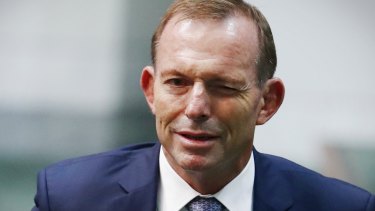Cutting red tape, rather than immigration, should be the principled and consistent solution to lowering prices and improving housing affordability.

Tony Abbott has said the government could ease housing demand by scaling back immigration "at least until land release and infrastructure can keep up". Pauline Hanson and several other conservatives like Cory Bernardi and Mark Latham have all floated similar ideas in recent weeks.
This approach is not only wrong, but it is also short-sighted and dangerous.
Yes, reducing immigration will put downward pressure on housing prices, just as any reduction in demand would. But its effects are overstated: very few migrants are so cashed up that they are instantly able to purchase a home that would otherwise be bought by a young Australian. Far from being cashed up, most who migrate here seek a better life for themselves and their families and work hard to achieve it.
My Nonno migrated from Italy in the 1950s. Back then, he could not speak a word of English, but had particular skills with his hands and was able to find employment as a steelworker on the Snowy-Hydro. He and his wife were not able to afford to buy a house immediately, but worked hard and were eventually able to afford a home in the outer northern suburbs of Melbourne.
This is a generational story that many Australians share. It is one that also applies to the migrants of today. Do we really believe, in 2017, that well off migrants are buying housing stock and keeping us stuck in traffic on our roads?
But there is a more fundamental point which Hanson and Co miss: immigration policy isn't housing policy. Equating the two means the massive benefits that migrants generate for our economy and society are ignored. In Australia, skilled migrants accounted for on average 67.7 per cent of our total immigration intake in 2015-16. These people make a great contribution to our economy.
The Migration Council of Australia's report on the economic impact of migration found that our migration program up until 2050 will contribute $1.6 trillion to the Australian economy. Skilled immigrants and student visas in particular, are our most productive of all visa types.
Further, it is passing strange that some of the advocates of cutting our immigration intake to lower house prices, also are the staunchest supporters of free trade.
A growing immigration intake increases the size of the Australian market, and demand for services across Australia.
Free trade is the belief that the exchange of goods and services across borders is fundamental to our prosperity. But if we believe free trade in goods, we should also believe in the movement of migrants with valuable skills.
Still, there is no doubt housing affordability is a real issue for many Australians, especially for those under 30. But the root cause of this problem is not excessive demand, it is restricted supply.
Rentals are also under pressure, with a recent report revealing the proportion of Australian households who rent is now 31 per cent, and 63 per cent of those renters are aged 35 or above.
Reducing our migrant intake at first looks tempting to policymakers, both to bring housing prices down and to ease demand pressures in the rental market. But unlocking more supply is the only credible long-term way to put downward pressure on rents. And the way to achieve this is cutting red tape and reducing regulation on housing development.
There is hypocrisy on many sides of this debate that deserve to be called out.
The Greens advocate tax increases through changing negative gearing to reduce housing prices. Yet it is green-flavoured local councils in the inner city of Melbourne and Sydney that mindlessly block all sensible high-density development in the inner city where public transport infrastructure is readily available.
This forces many Australians, particularly the poor, to suburbs in the outer fringe suburbs that require hour-long commutes into the city. Not only do they frustrate and oppose the building of major roads to these suburbs, but these same greens will also oppose unlocking land in the green wedges of our cities.
This is compounded by direct costs governments place onto landowners through taxation, planning red tape and stamp duty. In addition, the array of government commands is becoming more bizarre all the time: some new houses need a certain percentage of the house made of glass; some need high energy efficiency standards; and others require two car parking spaces. And all the while prices keep ratcheting up.
Cutting red tape on development and unlocking housing supply to meet our demand is the most sensible long-term policy prescription in this debate.
Cutting our immigration intake to reduce housing affordability is a reactionary populist policy that plays on the fears of Australians.
No comments:
Post a Comment